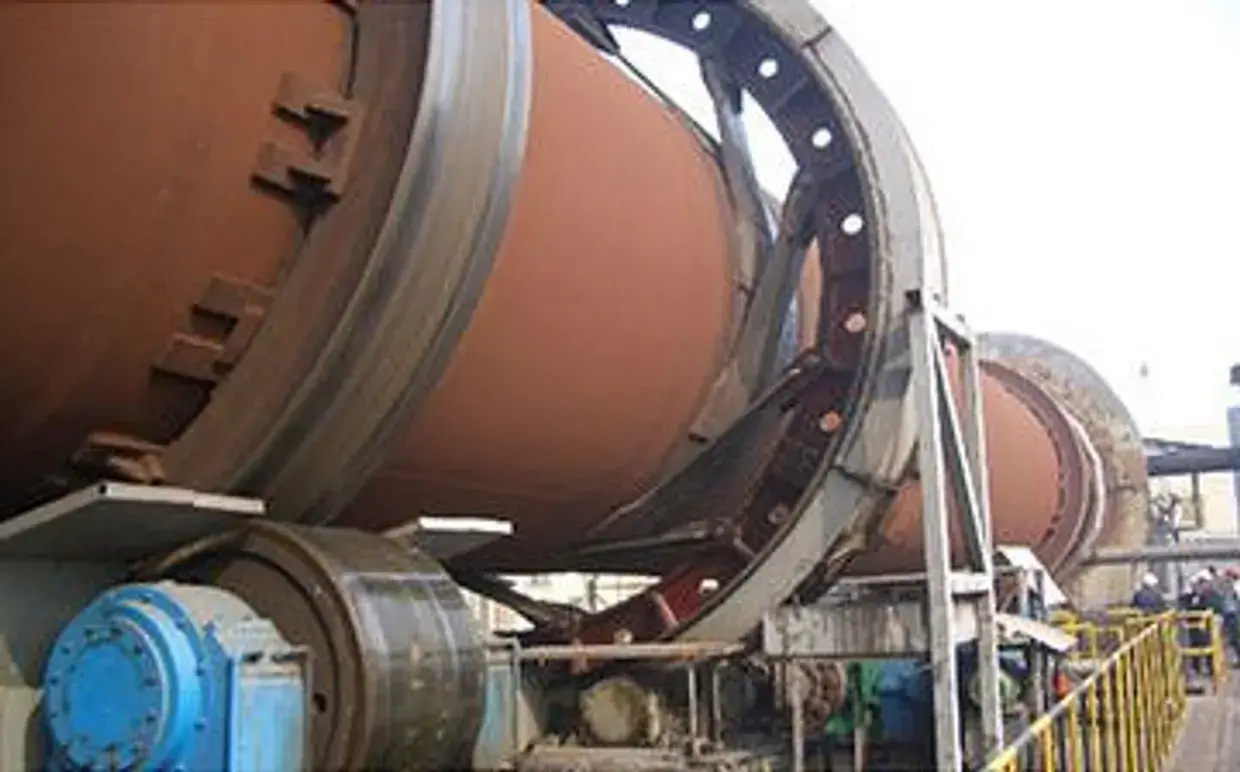At FRIGATE we have the in house design & manufacturing capabilities to offer Rotary Kiln mini & medium sized Cement plants. We can offer Rotary Kiln plants on Turnkey basis from 300 TPD to 2000 TPD.
Cement Rotary Kiln Features
- Support device: advanced shaft structure, automatic temperature measuring device and electrical heating device.
- Catch wheel: including mechanical wheel and hydraulic pressure catch wheel.
- Gears: single or double. The rotating speed is controlled by regulating motor, DC motor or variable frequency and speed regulation motor. Be reliable, energy-saving and efficient.
- Cylinder tyre bolster: lower bolster has three types: fixed, zoom and floating. Its structure is simple, replacement is convenient and it won’t hurt cylinder when it needs a change.
- Sealing equipment: there are many kinds for choice according to kiln models, including air cylinder edge sealing, spring edge sealing, and graphite block sealing and combination for above. The feature is adaptive for cylinder rotating and swing. And sealing effect is very good.
- Kiln head hood: including stationary type and flexible type.
Rotary Kiln Plant Features
- Low pressure drop at pre heaters
- Raw mill equipped with High efficiency separator
- Raw Meal blending in CFC silo
- Robust and strong construction
- Pre calciner suitable to work with alternative fuels.
- Inlet & discharge fitted with efficient seals
- Benchmark cooler design
Rotary Kiln Plant – Benefits
- Near Zero Maintenance
- Operation of Plant is Simple
- Gestation period is short
- Greater efficiency in Power Consumption
- Abundant fuel savings
- Low Installed cost
- Trusted and proven Trouble free Technology
Rotary kiln for sponge iron plant
Solid state reduction of Iron Ore using either coal/gas as a medium of reduction to produce a substitute raw material for steel making is termed as Direct Reduced Iron (DRI). Since DRI is produced by removing oxygen from iron ore, its structure is just like sponge with a network of connecting pores. These pores results in a large internal surface area which is about 10,000 times greater than the internal surface area of solid iron. Due to this, DRI is also known as Sponge Iron.
Sponge Iron is gaining more popularity because of the following reasons:
- Scrap is getting scarcer by the day
- Quality and composition variations are compelling
- Tramp elements coupled with Sulphur and Phosphorus hamper the end product quality of sale-able steel
- Uniform known composition, size and high bulk density compared to scrap
- Low Capex and gestation period compared to Gas based DRI plant
- It can be produced with non-coking coal and poor quality of coal that is available in abundance
- Capability of forming protective layer of foamy slag in the bath
- Potential of sensible heat recovery from waste gases
- Maintenance of Sulphur level in steel by its removal during Sponge iron production
- Lower refining requirements of steel produced
- It allows steelmaking to dilute metallic residuals in scrap
Main Components of the Rotary Kiln Circuit are:
- Raw Material Handling & Storage
- Rotary Kiln
- Rotary Cooler
- Magnetic Separators (MS)
- Dust Settling Chamber (DSC)
- Post Combustion Chamber (PCC)
- Product Handling & Storage
- Off Gas Handling & Cleaning System
Iron ore, coal and lime stone or dolomite are introduced into the preheated reactor at controlled rates through a feed pipe mounted through the feed end housing. Because the reactor is inclined from both the feed end to the discharge end, its rotation causes the iron ore and coal to mix and travel downward towards the exit. The rotational speed of the reactor can be adjusted to maintain the desired loading of the kiln and provide the required time to complete the reduction of the iron ore.
The quantity of coal feed is adjusted to get the required degree of production and to sustain the process. Adjustment of coal quantity can be done from the ends of the reactor, feed end as well as discharge end. The size fraction of the discharge end coal can also be adjusted to ensure required distribution of coal along the length of the kiln as per requirement and optimize coal consumption without in any way affecting the quality of the product. These flexibilities in the system help to get consistently good quality product and longer campaign life.
The air is supplied through the air piping system by fans mounted on the Kiln radially. The air piping system also contains on/off valves which open and close to admit air above the charge bed to aid combustion of over bed gases and achieve desired temperature profile. The iron ore is converted to DRI as it traverses along the length of the kiln.
Hot product discharges from the reactor through a transition chute to the rotary drum cooler. The cooler is an inclined steel cylinder. Water is sprayed along its outside surface to provide a heat sink to cool the product as it moves from the feed end to the discharge end of the cooler.
Advantages of FT Design:
- FT has the distinction of being the designer, producer and user of Sponge Iron
- Equipment and project designed according to international norms for longevity and optimal productivity
- Intelligent raw material proportioning system
- Versatile design adaptable to use wide range of raw material grades
- Facility to substitute natural gas for some portion of coal
- Advanced instrumentation & automation to reduce utilities’ consumption
- High combustion efficiency through gas monitoring system
- Highly engineered plant layout for minimal material handling and smooth material flow
- Efficient plant and process design for maximum waste heat recovery
- Pollution free plant with state-of-the-art dust suppression and collection system
